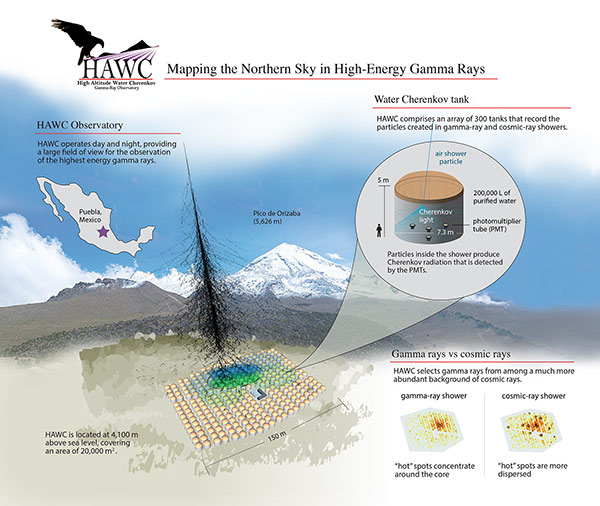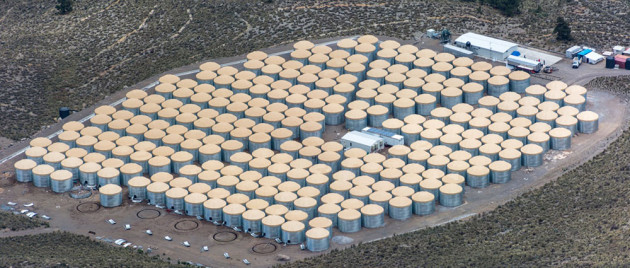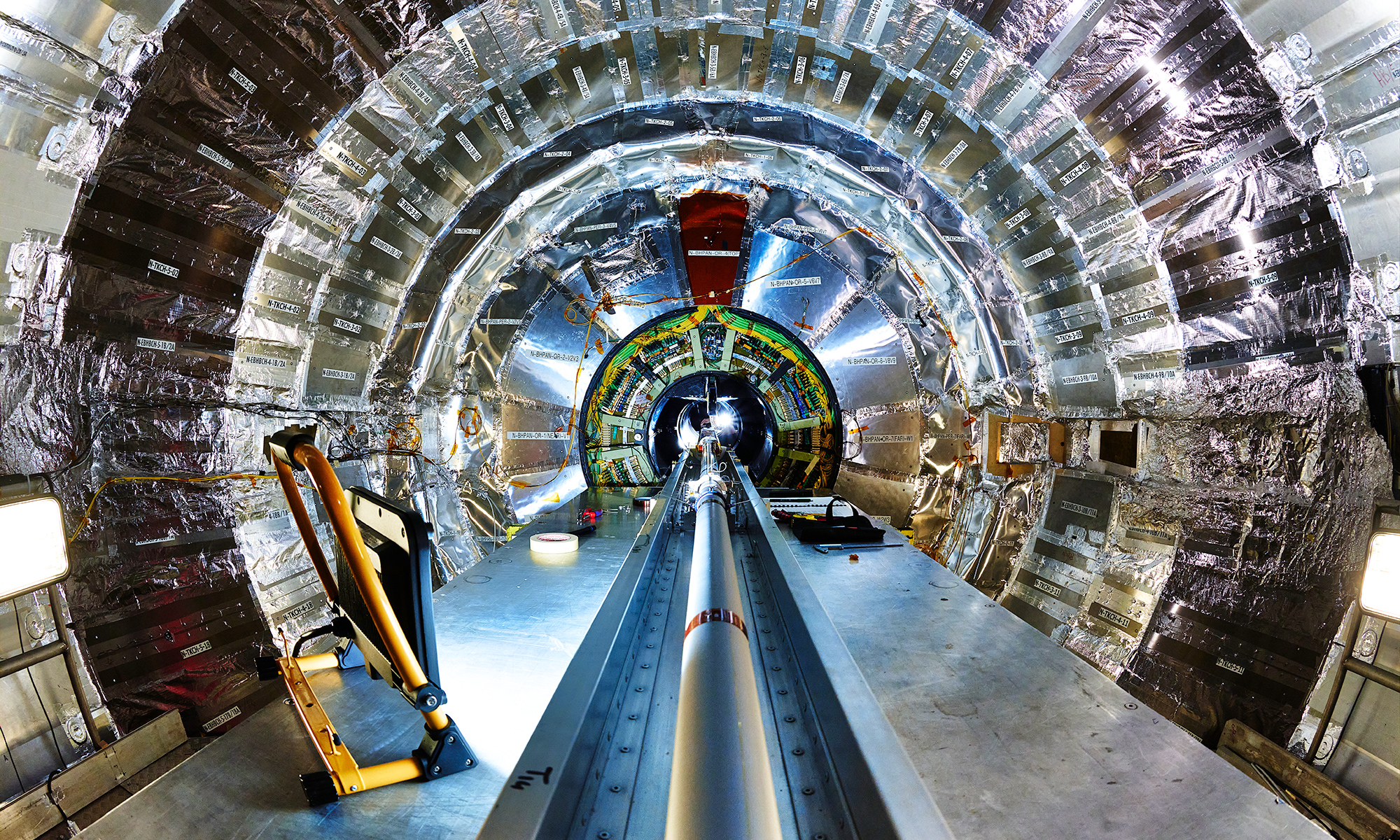Some of the most energetic phenomena in the known universe produce high-energy gamma rays, and a new observatory inaugurated this week in Mexico aims to greatly expand the catalog of known gamma ray sources.
“We want to understand the incredibly violent explosions that generate high-energy gamma rays and cosmic rays, like supernova remnants and gamma ray bursts,” said Segev BenZvi, professor of physics and astronomy at the University of Rochester. “But we also hope to observe something totally unexpected.”
The High Altitude Water Cherenkov (HAWC) Gamma Ray Observatory is beginning an all-sky search for very high-energy gamma rays, which scientists believe will greatly expand the catalog of known gamma ray sources. Gamma rays are photons, very high-energy ones in this case. Cosmic rays, on the other hand, are atomic nuclei that are deflected from their original trajectories by interstellar and intergalactic magnetic fields. BenZvi explained that by detecting high-energy gamma rays, it might be possible to trace them back to their source, also identifying the sources of cosmic rays, something that remains an astrophysical puzzle.
“HAWC truly is the only observatory of its kind, and will give us a clearer picture than ever before of the high-energy wonders of the universe,” said Jordan Goodman, spokesperson for the collaboration and professor of physics at the University of Maryland, College Park.
BenZvi explained that HAWC observes two-thirds of the sky every day, “so we are hopeful that we may see a new type of gamma ray source or some unexpected signal during the lifetime of the experiment.”
Located 13,500 feet above sea level on the slopes of Mexico’s Volcán Sierra Negra, HAWC is the newest tool available to visualize these explosive events and learn more about the nature of high-energy radiation. Construction is now complete on HAWC’s 300th and final detector tank, and the observatory will soon begin collecting data at full capacity. This milestone was marked with an inaugural event at the observatory on March 19-20, 2015.

Credit: HAWC/WIPAC
Each of HAWC’s detectors is a huge tank containing 50,000 gallons of ultrapure water with four light sensors anchored to the tank’s floor. When gamma rays or cosmic rays reach Earth’s atmosphere they set off a cascade of charged particles, and when these particles reach the water in HAWC’s detectors, they produce a cone-shaped flash of light known as Cherenkov radiation. The effect is much like a sonic boom produced by a supersonic jet because the particles are traveling slightly faster than the speed of light when they enter the detectors.
The light sensors record each flash of Cherenkov radiation inside the detector tanks. By comparing nanosecond differences in arrival times at each light sensor, scientists can reconstruct the angle of travel for each particle cascade. The intensity of the light indicates the primary particle’s energy, and the pattern of detector hits can distinguish between gamma rays and cosmic rays. With 300 detectors spread over an area equivalent to more than three football fields, HAWC is able to “see” these events in relatively high resolution.
To envision how the detectors work, Goodman suggests imagining your computer keyboard as a detector array, with each key representing one tank. Now, approach the keyboard with an open hand at an angle. This represents the cascade of charged particles. The heel of your hand will strike a few keys first, followed by more keys in a defined order as you flatten your palm across the keyboard.
“Someone else would be able to determine exactly where your hand came from based solely on the order of key presses,” Goodman explained. “HAWC works the same way, with multiple detectors arrayed over a defined space.”
BenZvi is also excited by the possibility of HAWC helping in the search for dark matter.
“We will use HAWC to search for “anomalous” gamma rays and cosmic rays that don’t seem to be produced by normal astrophysical processes,” he said. “They might be produced by the decay of dark matter.” BenZvi added that HAWC will be looking at really high-energy gamma rays, more than 1 trillion electron volts in energy (as the scientists refer to them), and this high energy means that they can also search for very massive dark matter particles that are otherwise difficult to observe. One month ago, BenZvi received a Department of Energy (DOE) grant to work on HAWC, specifically related to dark matter.
BenZvi has been a member of the HAWC team for five years and participated in all aspects of the experiment: construction, software design, and data analysis. Two of BenZvi’s graduate students, Mehr Un Nisa
and Chang Rho, and two undergraduates working with him are also part of the Rochester team working on HAWC.

HAWC has been collecting data since August 2013 when it had only 111 detector tanks. Even then, HAWC was much more capable than its predecessor—an observatory known as Milagro that operated near Los Alamos, N.M. and ceased taking data in 2008. In eight years of operation, Milagro found new sources of high-energy gamma rays, detected diffuse gamma rays from our own Milky Way galaxy and discovered that the cosmic rays hitting Earth had an unexpected non-uniformity.
The completed HAWC observatory will be 10 times more sensitive than Milagro, and each new HAWC detector has added to the observatory’s capabilities and spatial resolution. In the past year and half, HAWC has gathered high-energy images of objects near and far, including the Crab Nebula, star clusters in the Milky Way and the active galactic nucleus Markarian 421.



